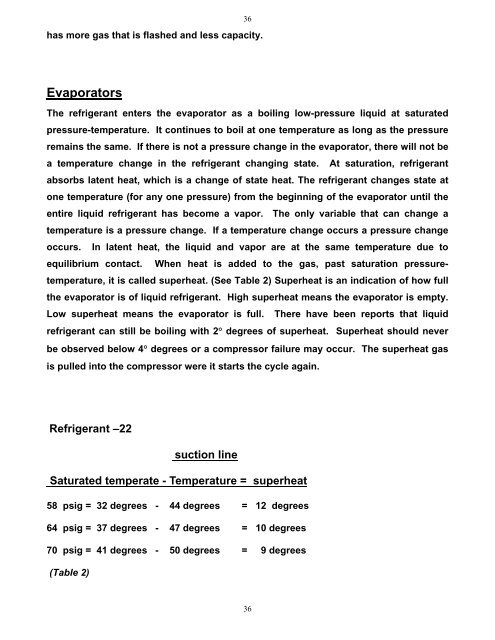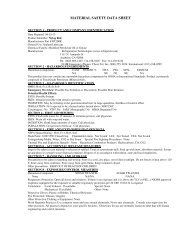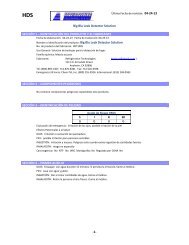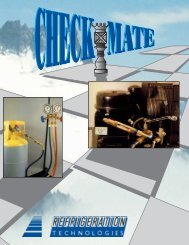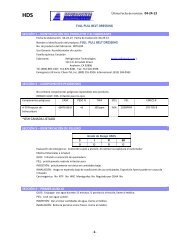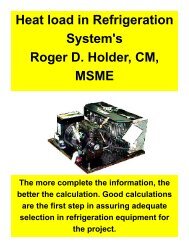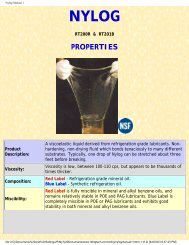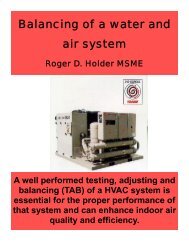Refrigeration Piping Charging Residential AirConditioning R
Refrigeration Piping Charging Residential AirConditioning R
Refrigeration Piping Charging Residential AirConditioning R
You also want an ePaper? Increase the reach of your titles
YUMPU automatically turns print PDFs into web optimized ePapers that Google loves.
has more gas that is flashed and less capacity.<br />
36<br />
Evaporators<br />
The refrigerant enters the evaporator as a boiling low-pressure liquid at saturated<br />
pressure-temperature. It continues to boil at one temperature as long as the pressure<br />
remains the same. If there is not a pressure change in the evaporator, there will not be<br />
a temperature change in the refrigerant changing state. At saturation, refrigerant<br />
absorbs latent heat, which is a change of state heat. The refrigerant changes state at<br />
one temperature (for any one pressure) from the beginning of the evaporator until the<br />
entire liquid refrigerant has become a vapor. The only variable that can change a<br />
temperature is a pressure change. If a temperature change occurs a pressure change<br />
occurs. In latent heat, the liquid and vapor are at the same temperature due to<br />
equilibrium contact. When heat is added to the gas, past saturation pressuretemperature,<br />
it is called superheat. (See Table 2) Superheat is an indication of how full<br />
the evaporator is of liquid refrigerant. High superheat means the evaporator is empty.<br />
Low superheat means the evaporator is full. There have been reports that liquid<br />
refrigerant can still be boiling with 2° degrees of superheat. Superheat should never<br />
be observed below 4° degrees or a compressor failure may occur. The superheat gas<br />
is pulled into the compressor were it starts the cycle again.<br />
Refrigerant –22<br />
suction line<br />
Saturated temperate - Temperature = superheat<br />
58 psig = 32 degrees - 44 degrees = 12 degrees<br />
64 psig = 37 degrees - 47 degrees = 10 degrees<br />
70 psig = 41 degrees - 50 degrees = 9 degrees<br />
(Table 2)<br />
36


